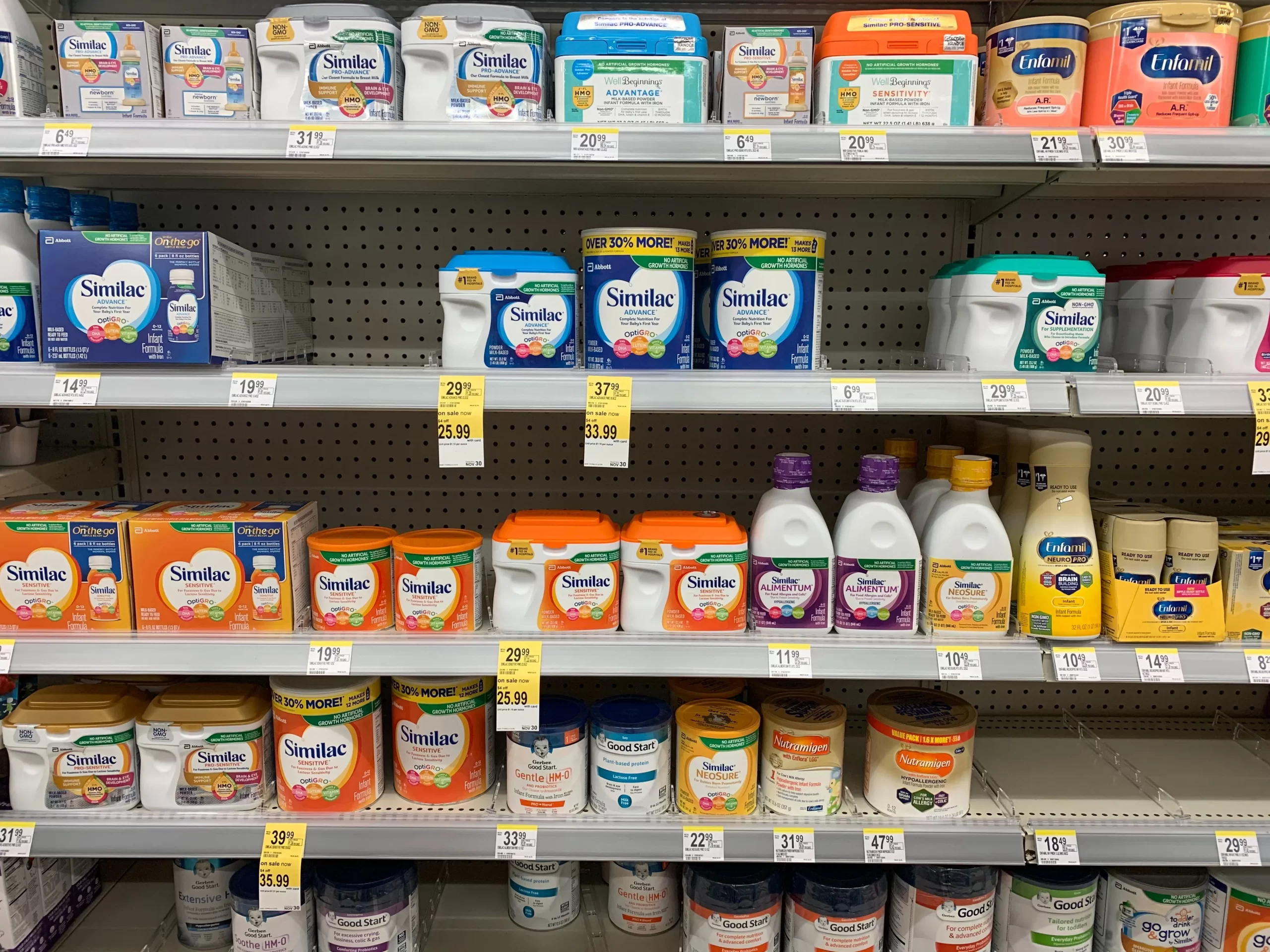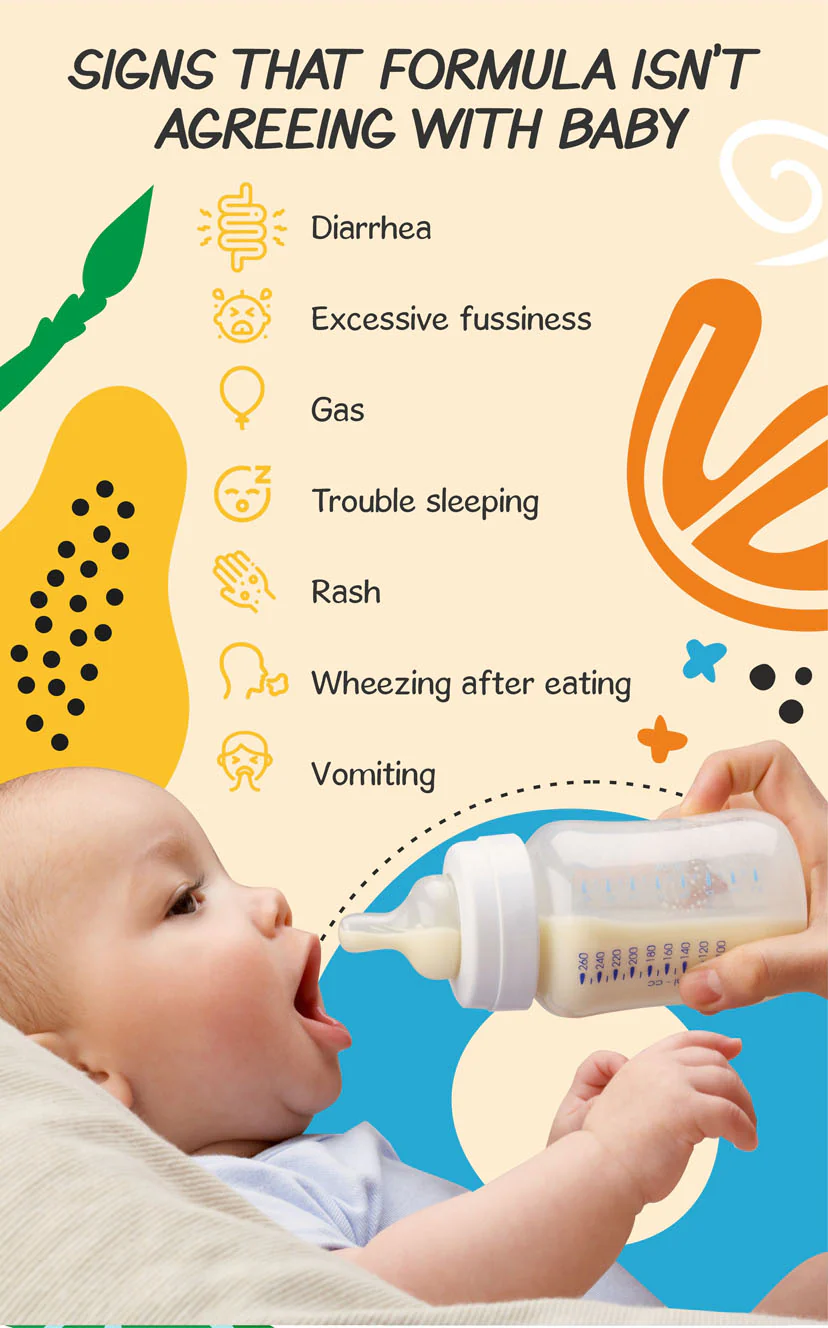Switching Baby Formula: A Guide for Parents
Switching baby formula to a different formula seems quite difficult. Whether due to allergies, fussiness, availability issues, or other reasons, makinga formula change can raise many questions for parents. Let’s explore what you need to know to ensure a smooth transition.
When to Consider Switching Baby Formula
Several reasons might lead you to consider a formula switch:
-
ntolerances and Allergies:
- Fussiness and Discomfort: Persistent crying, drawing legs up toward the tummy, or arching the back, especially after feedings, can indicate a sensitivity to something in the formula.
- Digestive Upset: Gas, bloating, constipation, diarrhea, or unusual stool colors (including blood or mucus) could signal trouble digesting the current formula.
- Skin Issues: Rashes, eczema, or hives may point to an allergy or intolerance, although these conditions can have other causes as well.
- Respiratory Issues: Wheezing, coughing, or congestion that appear in conjunction with other symptoms might indicate a formula sensitivity.
-
Medical Conditions:
- Reflux: In some cases, your doctor may recommend a specialized formula to help manage severe reflux.
- Slow Growth: Difficulty gaining weight or weight loss could necessitate a formula change, often to a specific high-calorie option, under a doctor’s supervision.
- Metabolic Disorders: Babies with certain metabolic conditions require specialized formulas tailored to their unique nutritional needs.
-
Availability Challenges: During shortages, parents might have no choice but to temporarily switch to a different, more readily available formula while consulting with their pediatrician for long-term solutions.
-
Other Considerations:
- Family Preferences: Some parents may opt for soy-based or organic formulas due to personal beliefs or dietary preferences.
The world of baby formula can seem vast and confusing, especially when faced with the need to switch formulas. Understanding the different types available can empower you to make informed decisions for your little one:
1. Cow’s Milk-Based Formulas:
-
Most Common Choice: These formulas are the most widely available and cost-effective option, containing modified cow’s milk protein for easier digestion.
-
Types:
- Standard Cow’s Milk-Based: Ideal for most babies unless they have specific sensitivities or allergies.
- Gentle: May contain partially hydrolyzed protein, breaking down the protein further for easier digestion for babies with mild sensitivities.
2. Soy-Based Formulas:
-
Milk Protein Alternative: Designed for babies with cow’s milk protein allergies or sensitivities, these formulas use soy protein as the primary source of protein.
-
Important Note: Soy-based formulas are not suitable for babies with soy allergies.
3. Hypoallergenic Formulas:
-
Addressing Allergies: These formulas undergo extensive protein breakdown (hydrolysis) to significantly reduce the risk of an allergic reaction.
-
Types:
- Partially Hydrolyzed Formulas: May be suitable for babies with mild cow’s milk protein allergies.
- Extensively Hydrolyzed Formulas: Offer the most significant reduction in allergen potential, ideal for babies with severe cow’s milk protein allergies.
4. Specialized Formulas:
-
Tailored for Specific Needs: These formulas cater to babies with unique medical conditions or dietary requirements.
-
Examples:
- Preemie Formulas: Designed for premature babies with specific nutritional needs.
- Lactose-Free Formulas: Suitable for babies with lactose intolerance.
- Reflux Formulas: May contain thickeners to help manage reflux symptoms.
Choosing the Right Formula:
Selecting the right formula is crucial for ensuring your baby’s optimal growth and development. Here are some key points to remember:
-
Always consult your pediatrician: They will assess your baby’s individual needs and recommend the most appropriate formula type based on their health, medical history, and any potential allergies or sensitivities.
-
Don’t self-diagnose: Avoid switching formulas based solely on suspicion of an allergy or intolerance. Consult with your doctor to receive a proper diagnosis and guidance.
-
Gradual transition: When switching formulas, do so gradually to minimize digestive upset in your baby.
How to Make the Switch: Ensuring a Smooth Transition to a New Formula
Transitioning your baby to a new formula can seem daunting, but with the right approach, you can facilitate a smooth and comfortable experience for your little one. Here’s a comprehensive guide to navigating this process:
Preparation and Planning:
- Consult Your Pediatrician: This is the most crucial step. Discuss your reasons for switching and any concerns you have with your baby’s current formula. Your pediatrician will assess your baby’s needs and recommend the most suitable new formula.
- Gather Your Supplies: Purchase the new formula and ensure you have enough sterilizing equipment, bottles, and nipples on hand.
- Choose the Right Time: Avoid switching formulas during periods of significant change or stress for your baby, such as teething, illness, or traveling.
Making the Transition:
Gradual Introduction: The key to a smooth transition is introducing the new formula gradually over several days. This allows your baby’s digestive system to adjust and minimizes the risk of upset.
Mixing Ratios: Here’s a common approach:
- Day 1: Mix ¾ of the old formula with ¼ of the new formula.
- Day 2-3: Increase the new formula to ½ of the total amount.
- Day 4-5: Increase the new formula to ¾ of the total amount.
- Day 6 and onwards: Offer only the new formula.
Monitor Closely: Throughout the transition, closely observe your baby for any changes in:
Digestion: Look for signs of gas, bloating, constipation, diarrhea, or unusual stool color or consistency.
Behavior: Pay attention to increased fussiness, crying, difficulty feeding, or changes in sleep patterns.
Skin: Monitor for any development of rashes, eczema, or hives.
Communication is Key: If you notice any significant changes or concerns, immediately contact your pediatrician for guidance.
Tips for a Smooth Transition
-
Choose the Right Time: Avoid switching formulas during stressful periods, such as moving or traveling, if possible.
-
Warm the Bottle: Some babies might be more accepting of the new formula if it’s warmed to resemble breast milk.
-
Don’t Give Up Too Quickly: It may take your baby time to get used to the flavor and consistency of the new formula. Have patience during the transition.
-
Be Reassuring: Provide extra snuggles and comfort as your baby adjusts to the change.
Important Considerations
-
Never Switch Formulas Without Consulting a Doctor: Ensure the new formula is nutritionally suitable and safe for your baby.
-
Avoid Homemade Formulas: These carry a high risk of nutritional imbalances and can be dangerous for infants.
-
Don’t Switch Frequently: Constant formula changes can disrupt your baby’s digestion further.

Conclusion
While switching formulas may be necessary at times, it’s crucial to proceed with your pediatrician’s guidance. By choosing a suitable formula, transitioning gradually, and closely monitoring your baby, you can help ensure a smooth and comfortable change for your little one.





